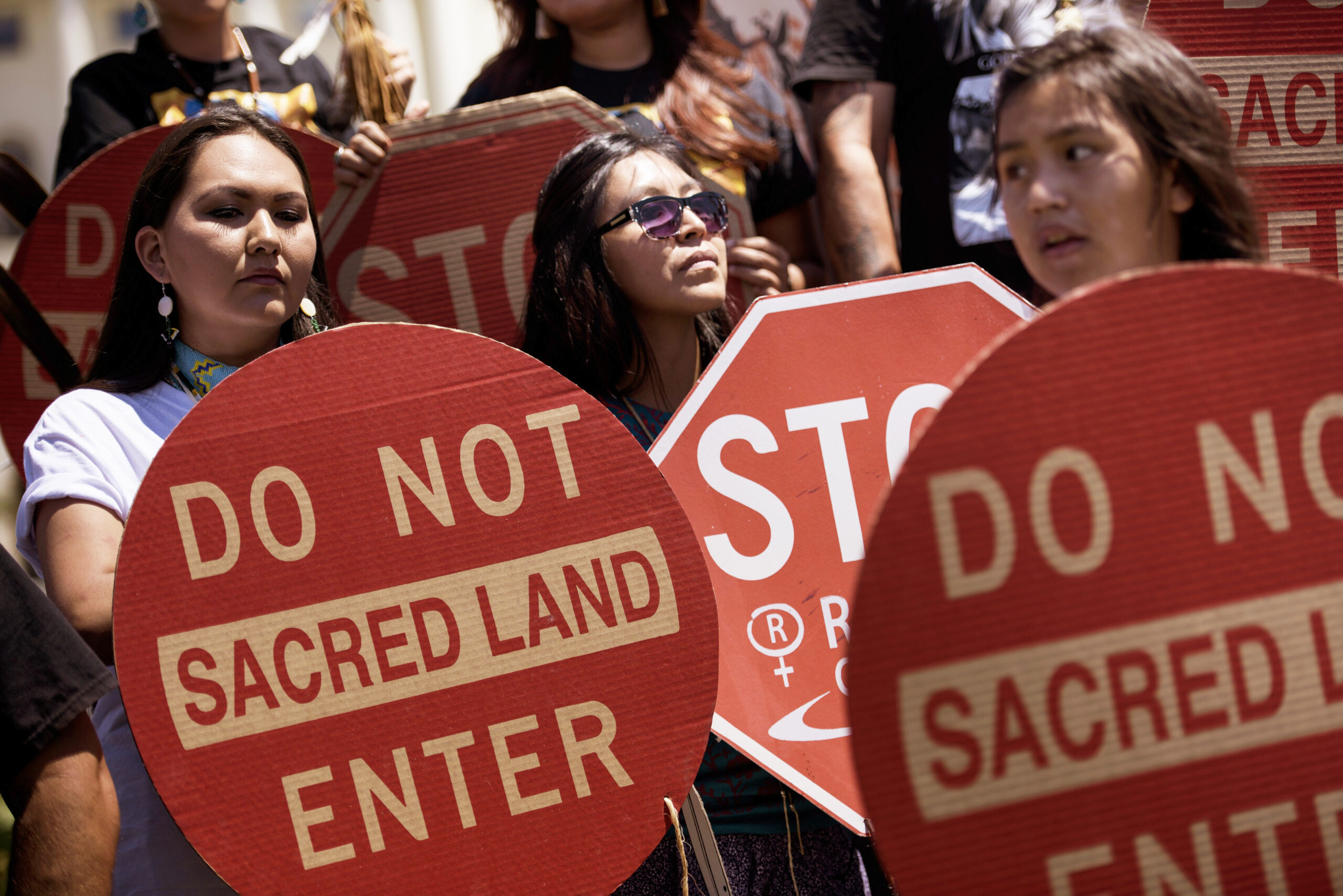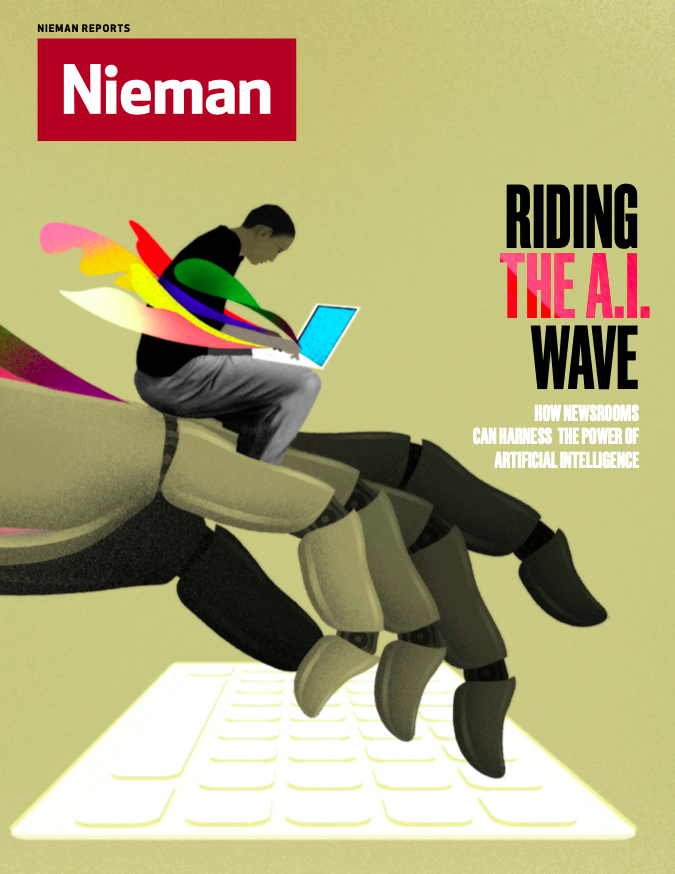Tristan Ahtone, NF ’18, on harnessing the expertise of Indigenous journalists to report on the environment
Think about this metaphor from Indigenous and disabled climate justice expert Kera Sherwood-O'Regan (Kāi Tahu): Climate change is like a tabletop, with each of the four legs representing a system of oppression.
The first leg represents capitalism. "We can think about the fact that capitalism really requires an imperative for constant growth," Sherwood-O’Regan says. "[Capitalism] upholds and produces climate change because it requires us to continuously extract, to continuously produce," ensuring the costs of those products are born by the environment, or communities displaced by the waste or the impacts of emissions.
Another leg represents colonialism. "I can't really think of an initiative that is more carbon intensive than taking a huge population from one side of the planet, putting them all on military ships, shipping them over to the other side of the planet where they encounter Indigenous peoples that they need to use force to subjugate, and then they want to change the entire landscape," she says. The metaphor can extend as far as one likes: a leg representing ableism, another, racism.
At Grist, where I have been editor-at-large working on the Indigenous Affairs desk since 2021, incorporating Indigenous frameworks into our climate coverage represents a fresh approach and illustrates one of our most important goals: coverage of Indigenous stories for Indigenous readers. And one of the best ways we can do that is by embracing the traditions and practices that Indigenous Affairs desks and reporters have used for years — examining the social, governmental, and economic systems that foster inequality. It’s a framing that’s particularly important for climate change because of the disproportionate effect rising temperatures have on Indigenous communities and peoples who have contributed to it the least.
Sherwood-O'Regan's work is just one of many Indigenous thinkers Grist's Indigenous Affairs desk has turned to for inspiration and guidance since launching with a directive to cover climate and the environment exclusively. We believe this desk to be the first of its kind anywhere, as is our separate Global Indigenous Affairs consortium, which brings together Indigenous journalists and Indigenous Affairs reporters to work on and re-publish Indigenous climate stories from around the world. Originally created to cover the United Nations Permanent Forum on Indigenous Issues, the team harnesses the expertise of reporters at High Country News, ICT, Mongabay, and Native News Online to create collaborative, pooled coverage published across the network’s platforms. Indigenous journalists and allies are already in newsrooms around the world, and when we act together, we can take on more and bigger stories.
Initially, we envisioned Grist’s Indigenous Affairs desk as a way to plug Indigenous Affairs content into Grist's already robust environmental coverage, but we quickly learned that to tackle the subject matter, we would have to take a different approach. Instead of building an Indigenous Affairs beat inside already-existing coverage, we would have to invert that idea, covering climate and the environment as a specific beat inside Indigenous Affairs.
One example: a growing body of science reveals that when Indigenous communities have their rights to their resources restored, conservation and climate efforts can be accelerated. Legal recognition of Indigenous lands has been shown to increase reforestation efforts and can create legal pathways to stopping the development of extractive industries. In other words, Western science continues to echo what Indigenous science has said for centuries — that Indigenous communities are some of the best equipped to care for the planet and could be key to reversing climate change. A recent story by our Indigenous Affairs Fellow Lyric Aquino provides one good example of this: By protecting Indigenous lands, nearly $2 billion in healthcare costs could be saved each year and up to 15 million respiratory and cardiovascular-related diseases could be avoided.
Rights-based approaches continue to provide some of the best planetary outcomes of any climate innovation by providing legal pathways for Indigenous peoples to protect their homelands from development, but such solutions rarely make it into policy discussions, let alone non-Indigenous reporting. For our team, this gives us an opportunity to turn away from the types of “victim” narratives that mainstream outlets continue to rely on when describing how climate change impacts our communities, and focus instead on stories that recognize there are no vulnerable people, only vulnerable situations. It reinforces the reasons why we do what we do: Indigenous journalism is an ongoing set of actions and practices that support and affirm self-determination, sovereignty, and human rights regardless of political borders while providing critical information to the public.
Let's return to Kera Sherwood-O'Regan and her metaphor. Maybe we magically fix climate change in the next five years; we chop up the tabletop; it exists no more. The legs, however, are still in place. What are the new issues that those systems support? Access to health care is one example, she says. "We have a massive epidemic of suicide amongst Indigenous people and particularly Indigenous youth," she adds. "All of those are created by the same systems that uphold each other."
For Grist's Indigenous Affairs team, this means doing work that connects globally and creates projects determined for us and by us, and in line with the constellation of ideas that underpin Indigenous journalism as a clear and distinct practice.




